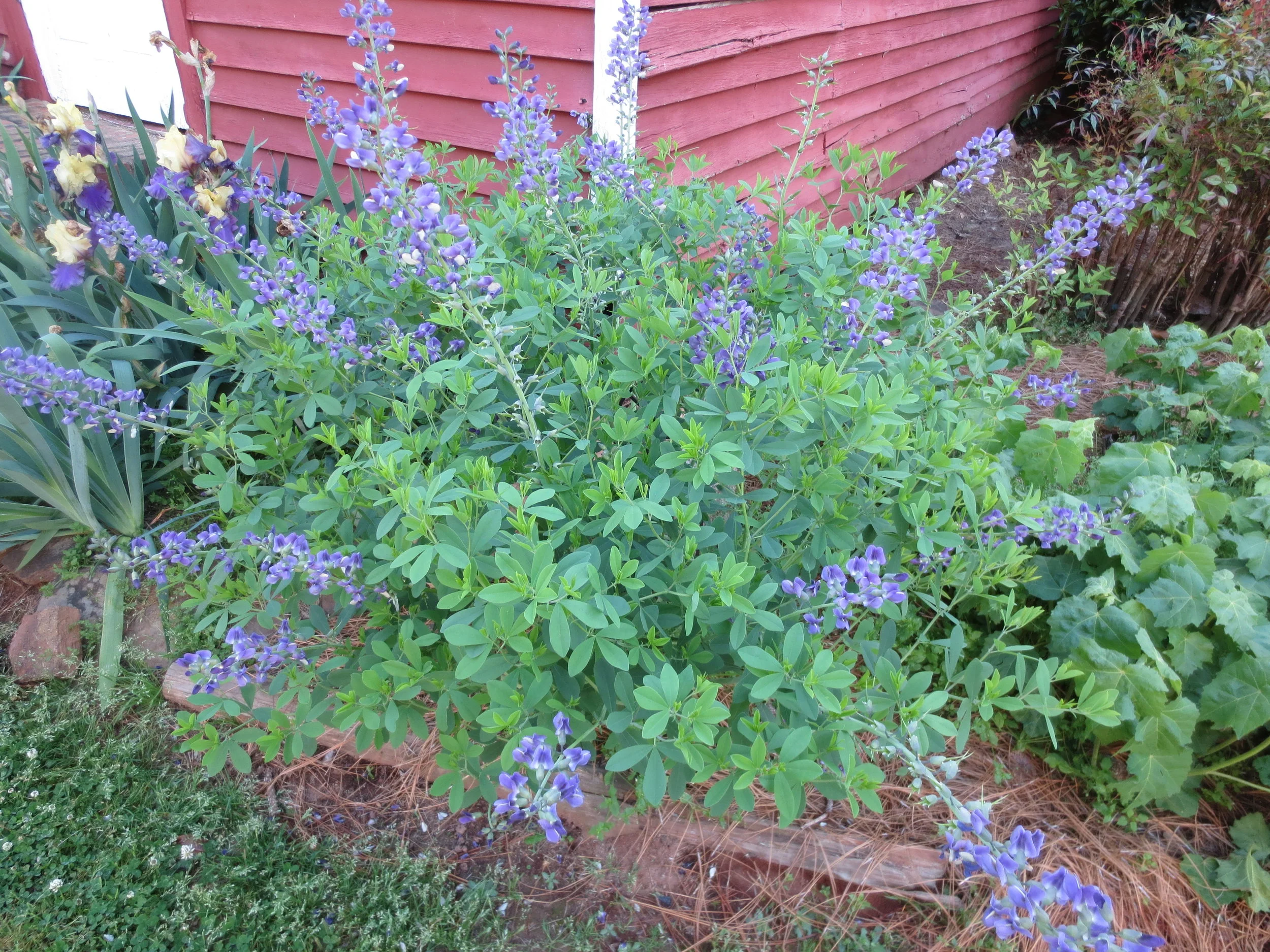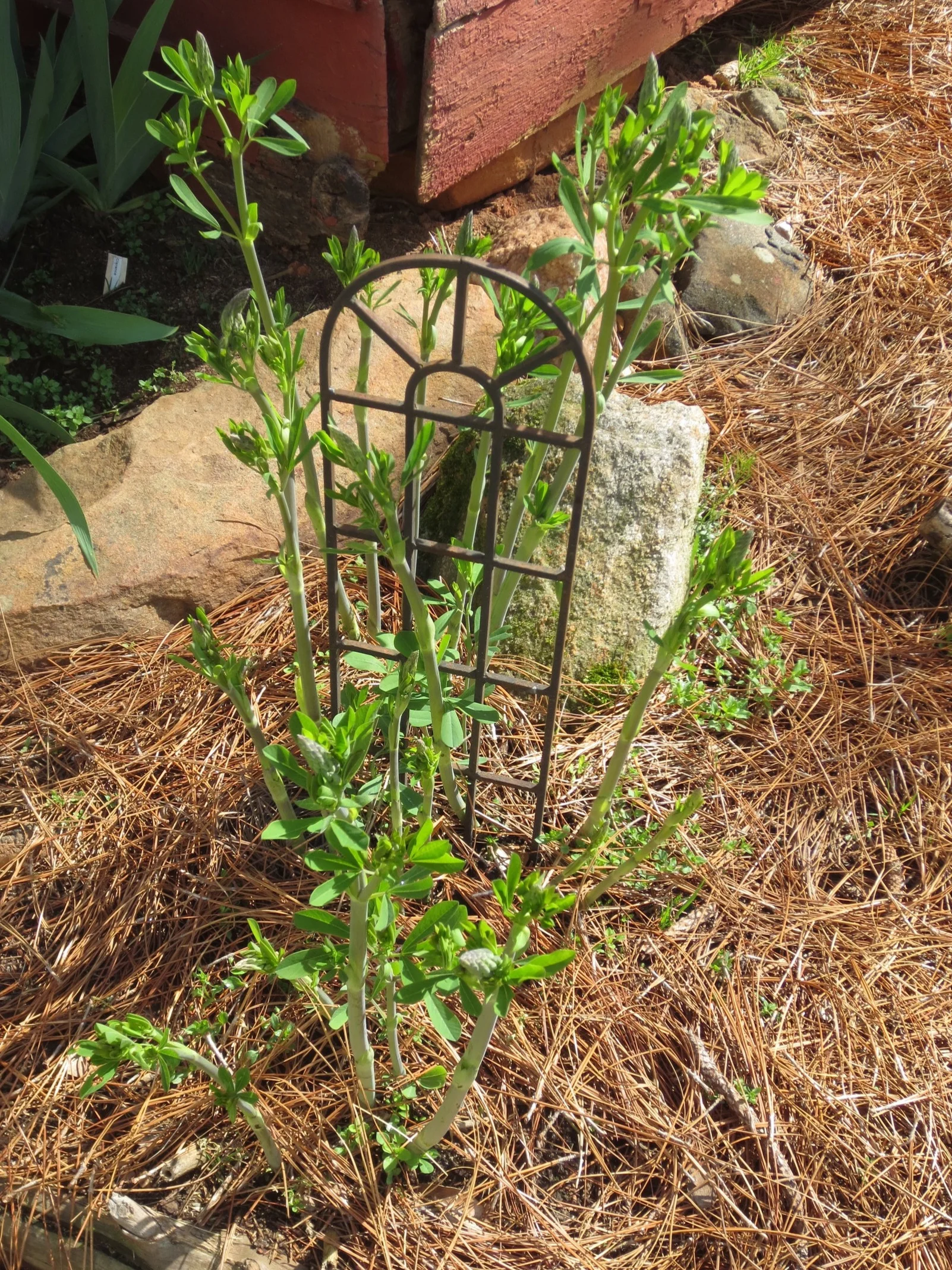Baptisia is a beautiful, long-lived perennial. It is in the Fabaceae family (legumes) and has a similar bloom to other plants in that family (peanuts, soybeans, peas).
A common name is Wild Indigo or False Blue Indigo, but modern cultivars extend beyond blue shades to yellows, white, and reddish purple. The plants reach three feet in height and about the same width. The growth form is strongly upright, not yielding to punishment from thunderstorms and hard rains. Grow in full sun.
Starting in 1745, Baptisia was grown and exported to Great Britain for the extraction of blue dye. It served as a substitute for the higher quality, more expensive dye extracted from Indigofera. As an export, it was second only to rice. Charleston, SC was the growth and shipping center, where it became known as “the blue gold of the South.”
This rugged plant is native to American prairie but can be grown in most of the US. Once established, it needs little care beyond cutting down frost-killed stems in winter. In upper South Carolina, the first shoots emerge around mid-March and bloom for four weeks, beginning in early April. The plant grows a deep tap root that helps it survive droughts but also means that it resents relocation. The blooms are followed by seed pods that look like inflated peas. They dry to a true black, making an unusual addition to cut flower arrangements. If you wish to propagate from seed, harvest the pods as soon as they are completely black and dry. Ripe pods are prone to bursting open, so take care to harvest them before they split. Each pod holds multiple seeds. These germinate easily. Plants can also be propagated from tender stem cutting along with a rooting hormone.
Baptisia was named 2010 plant of the year by the Perennial Plant Association. The name is pronounced bap-TEE-zsah.
Blue Baptisia contrasts with the adjacent blue and yellow bearded Iris.
Emerging Baptisia stems look like asparagus.


